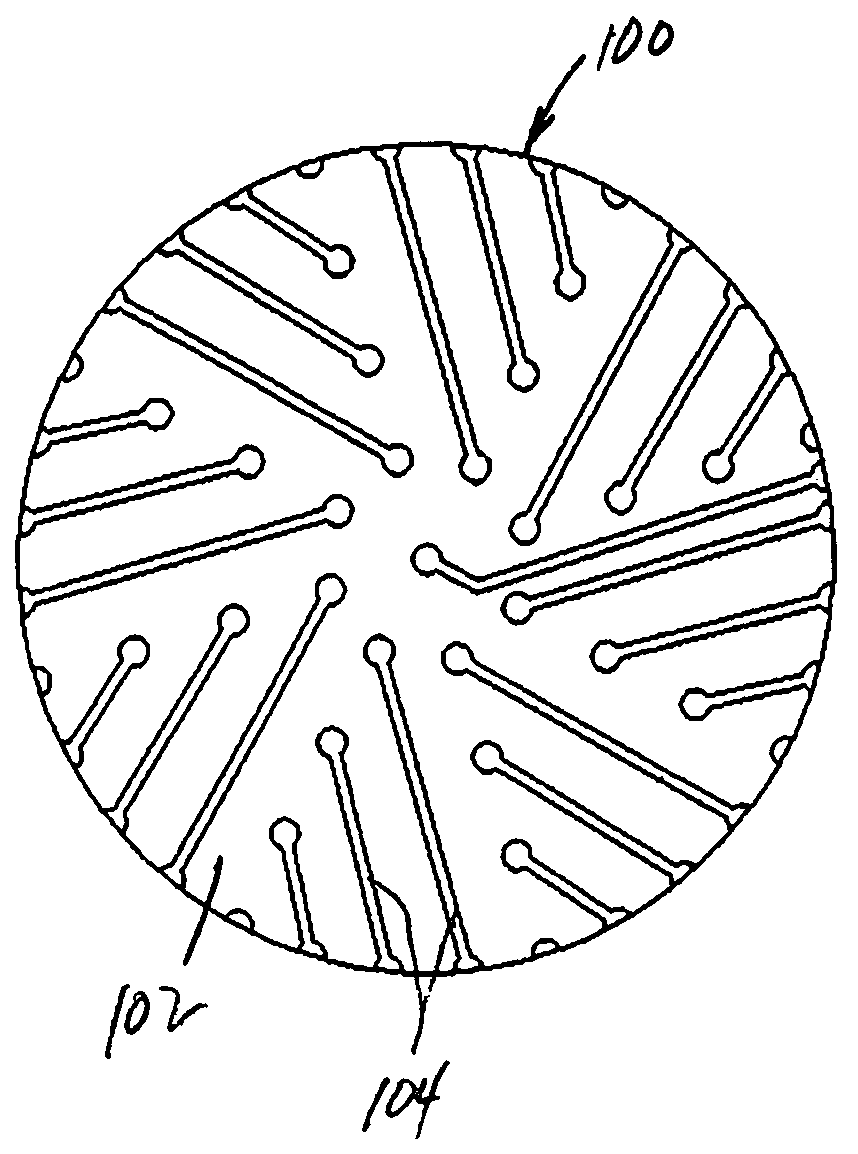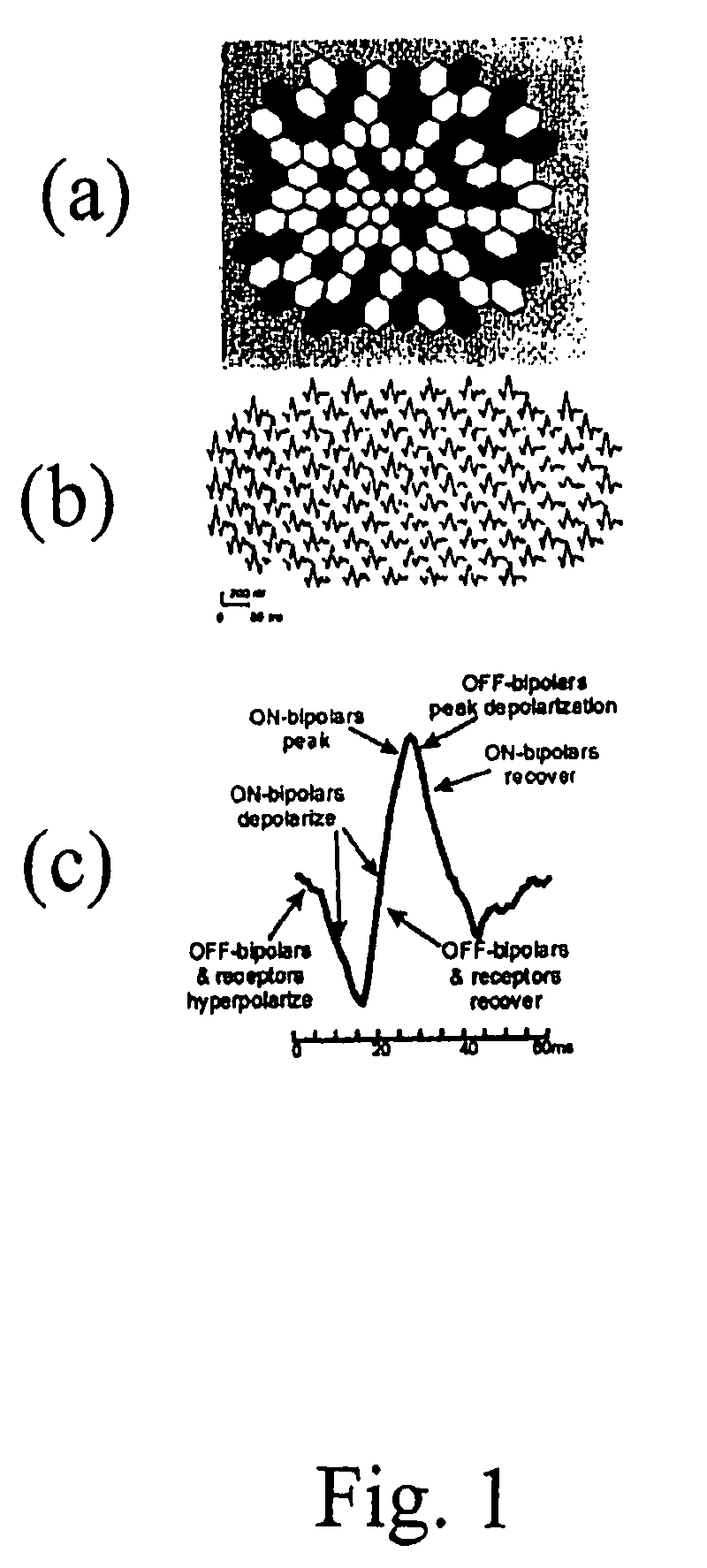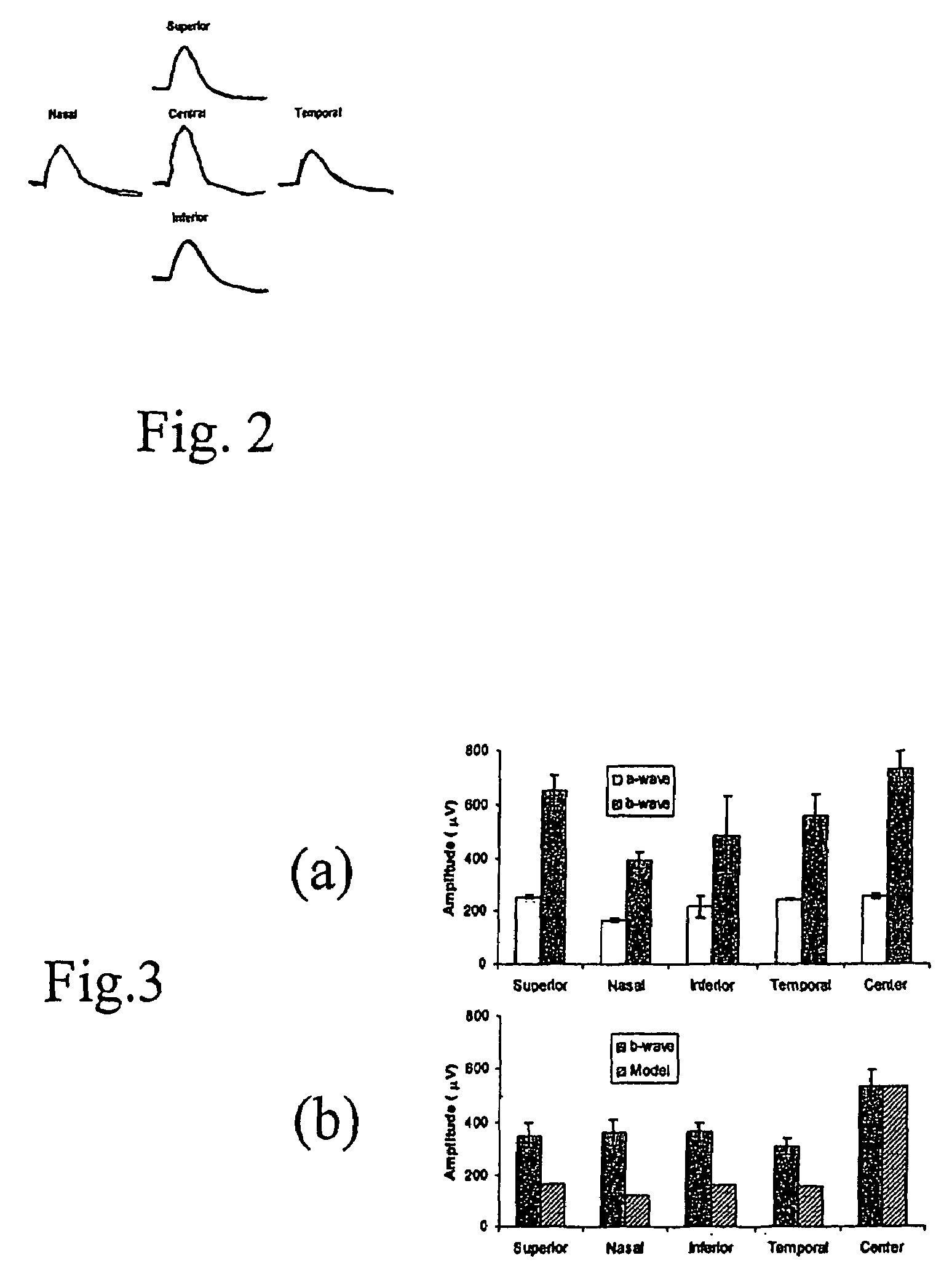Mapping retinal function using corneal electrode array
a corneal electrode and retinal technology, applied in the field of local retinal analysis, can solve the problems of difficult to administer psychophysical tests to young patients or patients with very low vision, and the method also has significant drawbacks
- Summary
- Abstract
- Description
- Claims
- Application Information
AI Technical Summary
Problems solved by technology
Method used
Image
Examples
Embodiment Construction
[0040]The invention described herein is, of course, susceptible of embodiment in many different forms. Shown in the drawings and described hereinbelow in detail are preferred embodiments of the invention. It is understood, however, that the present invention in an exemplification of the principles of the invention and does not limit the invention to the illustrated embodiments. For ease of description, different arrangements embodying the present invention are described hereinbelow in their usual assembled position as shown in the accompanying drawings, and terms such as upper, lower, horizontal, longitudinal, etc. may be used herein with reference to this usual position. However, the arrangements may be manufactured, transported, sold or used in orientations other than that described and shown herein.
[0041]New systems and techniques are provided for measuring local activity in the retina and, if desired, may be used with existing techniques. A brief review of electroretinography an...
PUM
 Login to View More
Login to View More Abstract
Description
Claims
Application Information
 Login to View More
Login to View More - R&D
- Intellectual Property
- Life Sciences
- Materials
- Tech Scout
- Unparalleled Data Quality
- Higher Quality Content
- 60% Fewer Hallucinations
Browse by: Latest US Patents, China's latest patents, Technical Efficacy Thesaurus, Application Domain, Technology Topic, Popular Technical Reports.
© 2025 PatSnap. All rights reserved.Legal|Privacy policy|Modern Slavery Act Transparency Statement|Sitemap|About US| Contact US: help@patsnap.com



